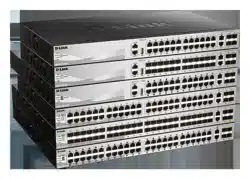Loading ...
Loading ...
Loading ...

DGS-3130 Series Layer 3 Stackable Managed Switch Web UI Reference Guide
211
Parameter Description
NSSA Select this option to assign the OSPF area as a Not-So-Stubby Area (NSSA)
area.
Stub Select this option to specify an OSPF area as a Stub Area.
Area Range IP This parameter is available when Range is selected. Enter the OSPF area
range IP address here.
Area Range Mask
This parameter is available when Range is selected. Enter the OSPF area
range subnet mask here.
Advertise This parameter is available when Range is selected. Select the advertise
option here. Options to choose from are Advertise and No-Advertise.
• Advertise - Specifies to advertise a Type-3 summary Link-State
Advertisement (LSA) for the specified range of addresses.
• No-Advertise - Specifies to suppress the advertising of Type-3 summary
LSAs. Component routes are still hidden behind it.
Default Cost This parameter is available when NSSA or Stub is selected. Enter the default
cost value here. This is the cost associated with the Type-3 default route that
will be injected into the stub area and not-so-stubby area. The range is from 0
to 65535.
• Default - Select this option to use the default cost value.
• No-Summary - Select this option not to inject summary routes into this
area.
Click the Delete button to delete an entry based on the information entered.
Click the Apply button to accept the changes made.
Click the Area ID link (0.0.0.0) to view more detailed settings about the entry.
After clicking the Area ID link (0.0.0.0), the following page will appear.
Figure 6-42 OSPFv2 Area Settings (Area ID) Window
Click the OK button to close the window.
OSPFv2 Interface Settings
This window is used to display and configure the OSPFv2 interface settings.
Loading ...
Loading ...
Loading ...
